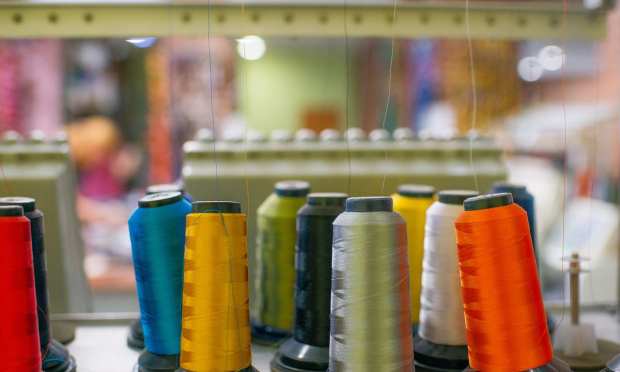Weaving Resilient B2B Payments Through Apparel’s International Supply Chains

The U.S. fashion industry continues to ride the roller coaster of quickly-evolving consumer demands. Seasonal product lines have given way to fast fashion, while today, buyers are now driving an industry shift toward sustainability and gender-neutral items.
All of this has profound consequences for brands’ supply chains and the manufacturing partners they choose to work with. With consumer demands rapidly evolving, vendors must keep pace, and brands’ supply chain strategies must prioritize agility.
Yet the last year and a half has proven difficult for the global apparel arena as bottlenecks, shutdowns and travel bans threw major wrenches in apparel supply chains and B2B payment practices. Some of the world’s biggest clothing brands, including Gap and Primark, were forced to cancel orders from their suppliers and manufacturers totaling about $3.7 billion during the months of March and April 2020. The payment delays and cancellations forced garment suppliers across the Middle East and Asia to band together and establish 90-day payment terms as the norm for the sector.
These mishaps have shed a light on U.S. apparel brands’ reliance on overseas B2B partners and the consequences that inflexible or inefficient supply chains have on B2B payment behavior. Speaking with PYMNTS, Pawan Gupta, CEO of India-based B2B apparel manufacturing platform Fashinza, explored how the digitization of B2B trade can empower both brands and manufacturers in the vertical to keep pace with customer demands without causing detrimental B2B payment disruptions.
Transparency Required
Apparel supply chains must shift based on evolving customer demands, and today’s biggest trends include U.S. buyers’ need for sustainability and ethical manufacturing practices, said Gupta. But when U.S. brands remain so heavily reliant on manufacturers overseas, obtaining visibility into business practices remains a challenge.
“The fact that 95 percent of production is outsourced overseas makes it extremely difficult for U.S. brands to control where and in what conditions their goods are produced,” he explained. “Hence, a lot of decisions by U.S. brands are based on the trust they place in their manufacturing partners and the visibility they can get from the factory floor.”
The view into manufacturing practices can become even more clouded as manufacturers can often outsource to subcontractors, not only making it more difficult to enforce sustainability requirements, but also adding costs onto the end product.
At the same time, consumers have not given up their demands for fast fashion and an accelerated rollout of new products beyond the traditional seasonal debuts. Smaller U.S. brands, in particular, can struggle to source MOQ (minimum order quantity) manufacturers at competitive prices, noted Gupta, while brands of all sizes struggle with long lead and turnaround times.
Delivery delays, a lack of insight into production status, and achieving a balance between quick stock replenishment without overstocking inventory and facing liquidation challenges are all key pain points in the space, often traced back to a lack of transparency between buyers and their overseas manufacturers.
Digitizing Commerce And Payments
While all of these challenges can be felt by apparel buyers and brands, the pain points can be acute for the manufacturers themselves as well. When supply chain issues arise, brands can suddenly cancel orders and delay B2B payments, throwing revenue in jeopardy.
In several ways, the digitization of B2B commerce and payments in the apparel industry can alleviate many of the biggest challenges of the U.S. market, said Gupta.
For instance, he said, manufacturers can broaden their customer base on B2B eCommerce platforms “to get connected to the global demand, which helps them to alleviate their dependence on just one or two key customers,” he said.
Payments digitization on these portals can also help smaller businesses transacting build up valuable financial data that can strengthen their ability to access working capital, Gupta added.
Understanding the unique pain points of the apparel industry is key to finding traction in the market, but according to Gupta, it will be just as vital for Fashinza to identify the unique challenges of U.S. industry players as the company expands in the country. Understanding how customer demands place particular pain points on the apparel supply chain, and identifying ways that digital platforms and electronic payments can ease that friction, is important for the success of any platform in a market that can struggle to modernize, said Gupta. But just as important is a positive user experience.
“While people blame the low adoption of digital-first solutions on lack of knowledge or will, we believe it is because most solutions fall way short of actually solving a problem,” Gupta said. “The trick is to build an experience that is super easy and intuitive to use.
“At the same time, the product needs to provide an end-to-end solution for real business problems so that a customer can depend on your solution,” he continued. “That is how the approach to a digital-first solution has to be: customer success first and technology second.”
